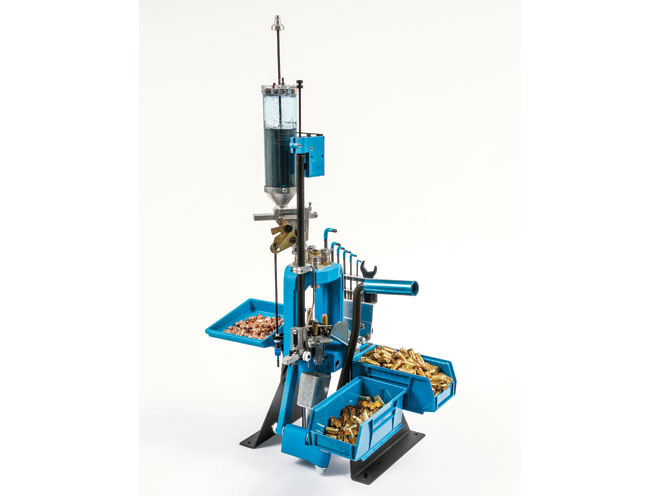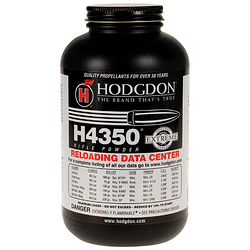As promised, here’s a post on the reloading of cartridge cases. For the sake of new players and people’s sanity overall, I’ve simplified much of the process and materials. Enjoy.
Equipment
Press
The most basic and arguably essential element of handloading is the press. Now, there are hundreds of different types of presses and frankly I can’t be bothered to go over all of them, so I’ve simplified it down to four types of presses:
- Rifle reloading press
As the name suggests, these are calibrated to fit most rifle-sized cartridges together, such as .30-06 Springfield and .223 Remington, also known as 5.56×45mm NATO. Limitied to one round at a time.
- Handgun reloading press

As the name suggests, these are made to fit pistol-sized cartridges together, from 9×19mm Parabellum to magnum-sized handgun rounds such as .357 Magnum and .50 Action Express. Can load up to three cartridges at once.
- Shotshell reloading press
These are made to reload shotgun shells, and usually are gauge-specific, however for the sake of simplicity these will be able to load all types of shotshells. Limited to once round at a time.
- Advanced reloading press

Partly automated and requiring power in order to function, these can make all types of cartridges at a much faster rate than mechanical presses, and are also the only type of press that can load large-caliber rifle cartridges such as .50 BMG and .600 Nitro Express.
Reloading Tools
Usually handloading requires a myraid of tools in order to load cartridges, for example a case trimmer, head space gauge, modified case gauge, powder measure, priming tool, scale, shellholder, and reloading dies are considered essential, however, I’ve simplified this down into three tool kits, these being rifle reloading kit, handgun reloading kit, and shotshell reloading kit. These will be required for reloading each of the respective round, and can spawn most commonly in gun stores.
Bullet Mould

These are used to cast molten lead into the shape of a bullet or shot before being loaded. Like other handloading equipment, these can be usually found in gun stores.
Materials
Casings and Hulls

Brass for rifle and handgun cartridges, hulls for shotshells. These can be simply picked off the ground from fired rounds, however these can only be reloaded about three or four times before they become useless. These can also spawn in gun stores. Shotshells are unique in that hulls are craftable in the form of paper cases, however these cannot be reloaded. Note that for the sake of simplicity spent casings and those premade will not be seperated into individual calibers, and will instead be colloquially known as either “shotshell hull,” “rifle cartridge casing,” or “pistol cartridge casing,” with possible variations based on whether it is high or low caliber in the case of rifle and pistol cartridge cases.
Powder
Available in jars in gun stores, as well as in certain sporting goods and outdoors supply stores, smokeless powder is the main propellant used in cartridges. Note that for the sake of simplicity I will not be seperating smokeless powder into subtypes based on what type of cartridge it is meant for. Alternatively, guncotton can be made using fine cotton wool and a mixture of sulfuric and nitric acids, and finally black powder can be made using a mixture of charcoal, a byproduct of burned wood, sulfur, and saltpeter, of which the latter two can be found in gardening stores.
However, using black powder as a propellant leaves corrosive residue in the firearm chamber and barrel, resulting in an increased need for maintainance.
Bullets, Shot, Slugs, and Wads

Bullets can be found pre-made in both full metal jacket and hollowpoint types in gun stores, and these can be set as-is. In the abcense of these, molten lead from pipes and car batteries can be cast into bullets, however these leave lead deposits in a firearm barrel and thus increase the need for maintainence. Note that these can only be cast into ball ammunition.
Shotshells, on the other hand, use either shot or slugs, both of which must be cast. Shotshells loaded with shot also require paper wads to help push out the shot. Note that shotshells can also be loaded with alternative loads such as stones, coins, etc.
Breakdown
So in summary, if a handloader uses factory-made components the resulting cartridge is comparable to existing cartridges, however if makeshit components such as cast bullets and matchhead primers are used, there is a higher chance that something can go wrong or the firearm firing these rounds will need more cleaning and maintainence.
I don’t think I’ve made this overly complicated, and if I have then I apologize, but I’ve truly simplified handloading down into the simplest form possible, anything less and we’ll have a Rust system where players can just make incendiary ammunition with low grade fuel refined from animal fat, metal fragments, and gunpowder.
I hope you’ve enjoyed this topic, and found it to be a good read. Please leave any concerns and suggestions below.





